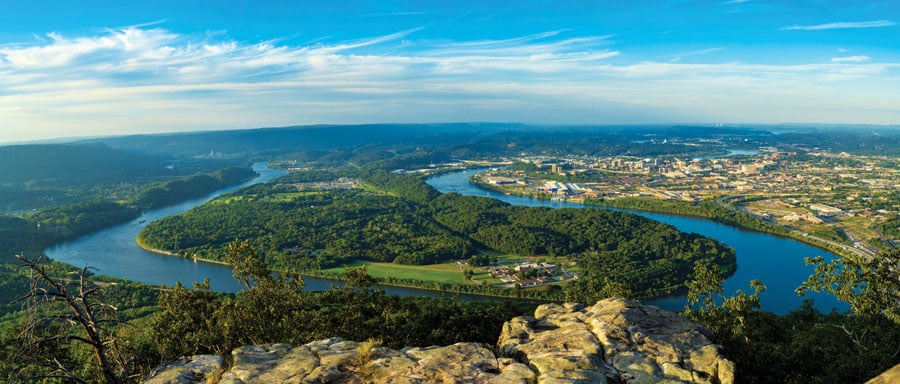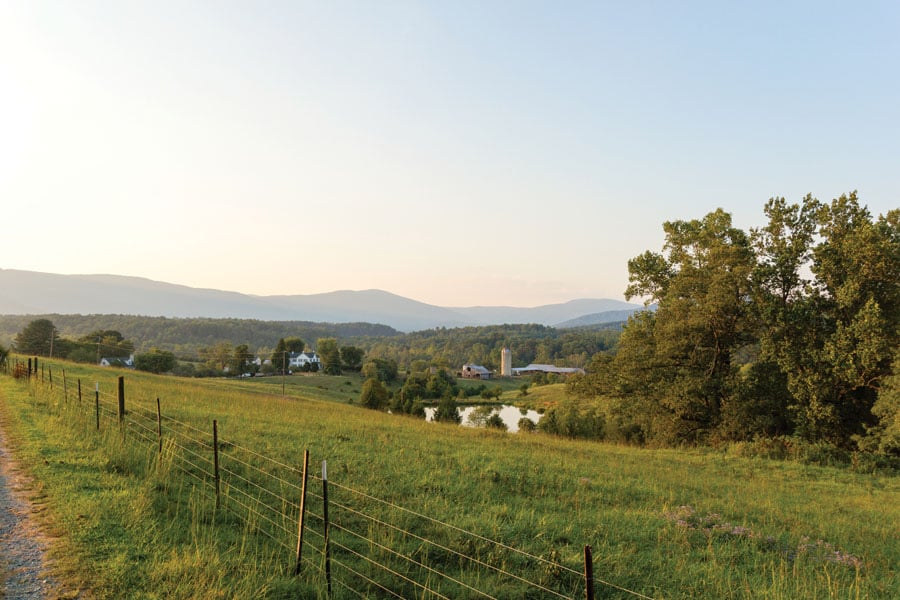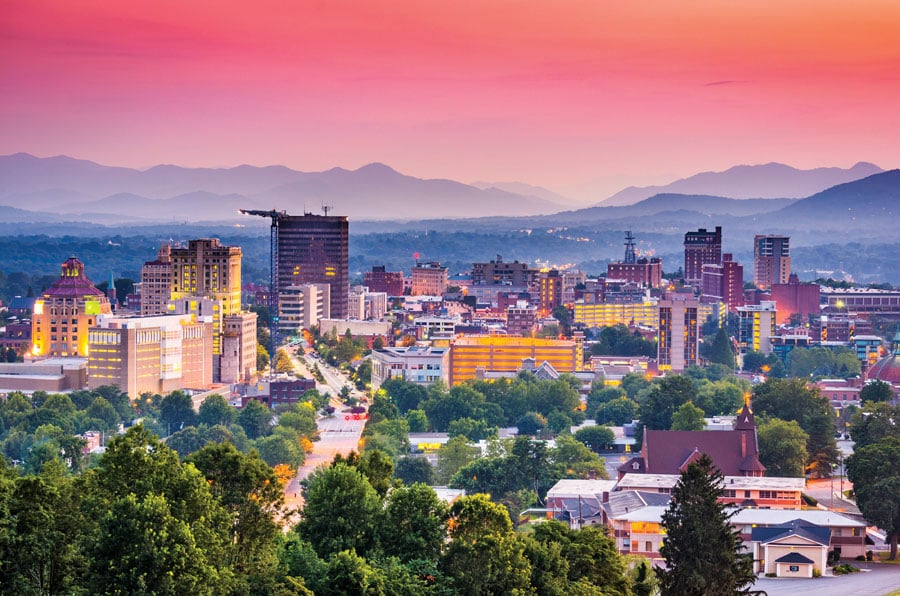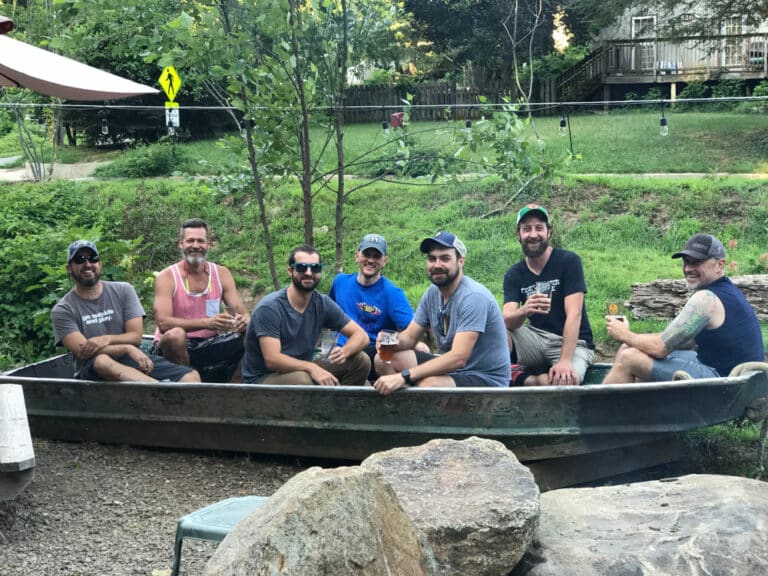Asheville is one of Appalachia’s most celebrated outdoor towns. More than nine million people visit the city annually. For some residents, however, the hype is altering one of America’s hippest mountain hubs beyond recognition.
“We were downtown for such a long time,” says Frank Mandaro, manager of Beer City Bicycles. “The rent kept increasing…everything goes up. We understand that you can’t expect things to stay the same. You can go out of business or make the adjustments. We decided to leave downtown.”
Beer City Bicycles moved north of town, near the banks of the French Broad River. Mandaro, yearning for the day when shop rats were versatile handymen, often called upon to fix a neighbor’s busted appliance, hopes the move will mean less froth and more handiwork. Most storefronts downtown, he says, are forced to bartend to browsing tourists.
“We’re drowning in our own beer production,” says Mandaro.
Those who live in Asheville value its outdoor vibe and gorgeous mountain landscape, but they also endure exorbitant rent prices, low service-industry wages, gentrification, and displacement. It’s now the most expensive city in North Carolina, with the median two-bedroom apartment running $1,180 a month. The average property value jumped 9% in the past year, while homelessness increased 10 percent, according to city data. Bowen National Research, a real-estate marketing firm, found a mere 1% vacancy rate in Asheville housing units in 2015, and Nationwide declared Asheville the sixth unhealthiest housing market in the country. While the city’s population has grown dramatically, the African American population has actually shrunk. In 2010 African Americans represented 17% of the population. Today that figure is just 6%.
“I never thought in my early 50s, I would be looking for help,” says Asheville resident Barbara Little. Escaping an abusive relationship, Little made her way to a downtown women’s shelter. She had no house and no family in Western North Carolina, only the clothes on her back.
Through Goodwill Industries, Little began working arranging flowers for a grocery store. She also sought a home. One morning, while sitting at the bus stop, she noticed Mountain Housing Opportunities’ attractive facade. She applied and qualified for an affordable apartment.
“Boy, that makes the biggest deal in the world,” says Little of her securing an apartment. “Plenty of time to study, to get rest. I can get up when I want, make a cup of coffee, go home and take a shower. It makes all the difference in the world. You have a choice.”
In the summer of 1988, Scott Dedman teamed with six other volunteers and repaired seven homes for the elderly and disabled in the Asheville area. Within the year, they started Mountain Housing Opportunities. Focusing on emergency home repair and affordable homeownership development, the group has fixed up over 4,000 homes and built and financed another 1,200 houses and apartments in its 18-year history. Repairs and construction are financed through private investment and a low-income housing tax credit.
As Dedman sees it, Asheville’s housing crisis is simply a matter of low supply and high demand. When Mountain Housing Opportunities constructed 62 new units in 2016, they received over 600 applications. Stringent building and zoning restrictions, Dedman says, impose limits on the number of new houses constructed.
The majority of Mountain Housing Opportunities applicants are working, single parents. To qualify for one of their apartments, an Asheville resident must make less than 60% of the area median income. In Mountain Housing Opportunities’ newly renovated Depot Street apartments, the average income is $18,000, which is also the median salary for most of the city’s service-industry jobs, according to the N.C. Department of Commerce.
More than four walls and a roof, Mountain Housing Opportunities builds attractive houses in safe communities. They promote ownership, pride, and environmental consciousness. They’ve had kids paint bus stops, organized creek clean-ups, and planted hundreds of trees. Contractors install state-of the-art recycling chutes, solar panels, and excellent insulation for lower energy bills. Most importantly, they’re bringing workers closer to their jobs.
In the Asheville area, there are more jobs than homes, which means more commuters and more fuel emissions. Dedman estimates that their new Depot Street apartments will save more than 60,000 miles of commuting and thousands of dollars.
“The cost of commuting is 50 cents a mile,” says Dedman. “If you drive 10 miles to work and back everyday, that’s $200 a month. We’re going to save money and the environment if we can add housing supply near jobs. If you work in Asheville, you should be able to live in Asheville.”
Dedman maintains that housing is fundamentally a moral issue.
“I’m glad that people want to live here. I’m glad people want to visit here, that it’s a desirable place to live, but along with that comes a responsibility to be inclusive and to include people of modest means.”
Income inequality and a housing crisis are not problems unique to Asheville. These are national trends that are especially pronounced in desirable towns. On the other side of the Smoky Mountains, Chattanooga, Tenn., possesses many of the same gifts as Asheville: rich natural resources, a thriving downtown, and an energetic populace. And like Asheville, rising prices, a lack of housing, and a stratified society are growing concerns.
Martina Guilfoil, CEO of the Chattanooga Neighborhood Enterprise, traveled to Asheville with a team of 25 planners hoping the Beer City held some answers for Chattanooga.
“What struck me about Asheville is outdoorsy folks and artists work hard and make it cool, and then they get priced out,” Guilfoil said. “After our trip, I said, ‘If we don’t get ahead of this, it could happen to Chattanooga.’”
Some argue that it already has.
“We have to be honest that there are people left out of the growing prosperity,” Chattanooga Mayor Andy Berke told an audience at a downtown forum. “Yes, even in the best town ever.”

Research by The Business Journals found Chattanooga to have one of the 10 highest income inequalities in America. For every household earning over $200,000, there are 21 low-income households. A study by the Thomas Fordham Institute’s Michael Petrilli showed one particular Chattanooga neighborhood to be the second-most rapidly gentrifying zip code in the country. (Roanoke, Va. had the 4th.)
“A lot of effort has been put into making Chattanooga a destination. The criticism is that it’s the tale of two economies,” says Guilfoil. “There’s the tech companies and the innovation and a mile away it hasn’t reached into the neighborhoods. The school system is still problematic. Who wins and who doesn’t? How do you bridge these gaps?”
As Chattanooga grapples with the widening fissure between rich and poor, the city government and philanthropies are proactively increasing their affordable housing supply through tax incentives, inclusionary zoning, subsidies, and regulations.
“I don’t think there is one tool,” Guilfoil says. “We need a lot of tools in the tool box.”
Despite growing inequality, Chattanooga’s hard-won revitalization should not be overlooked.
“Nobody was interested in doing development in those early days,” says Amy Donahue of the nonprofit River City Company. “We held properties for development projects for a long time. Sometimes, we even gave it away.”
The city’s renaissance was born largely out of an effort to restore and conserve its natural resources, particularly the Tennessee River.

“Our name comes from our original task: to reconnect the river and the city,” explains Donahue. “Our river was a wonderful asset, but you couldn’t access it from downtown. So we put in a 13-mile stretch of Riverwalk. The idea was to create a path for folks to use to create access to the river. We are all about maximizing our natural assets and what makes us special: the outdoors and our river.” For Dr. Scot French, a historian who spent years studying race and place in Central Virginia, the lessons of history and current issues are intimately linked.
French spent ten years studying neighborhoods in Charlottesville, one of Virginia’s most popular and expensive towns. In 2009, he began work on the documentary The World is Gone: Race and Displacement in a Southern Town. The film tells the story of Charlottesville’s Vinegar Hill neighborhood, a mixed-income, walking neighborhood that was demolished in the 1960s in the name of urban renewal.
“The people living there just didn’t count,” French explains. “The destruction of this community wasn’t viewed as a loss. It was sold as reform, a progressive reform.”
As cities confront their celebrity, French hopes past mistakes will be a guiding star and they will not take their poorest citizens for granted.
“I think the lesson Charlottesville learned was to engage the community in the process,” French said. “Public housing units are getting old. The city has to decide. This time around, they have committed to working with the community and engaging them in the process.”
For Appalachia’s most popular cities, the challenges are great, and the solutions are as unique as the individual communities. However, in each place, there’s a need to increase housing supply, raise wages, address the root causes of poverty, conserve resources, and engage the local community.








